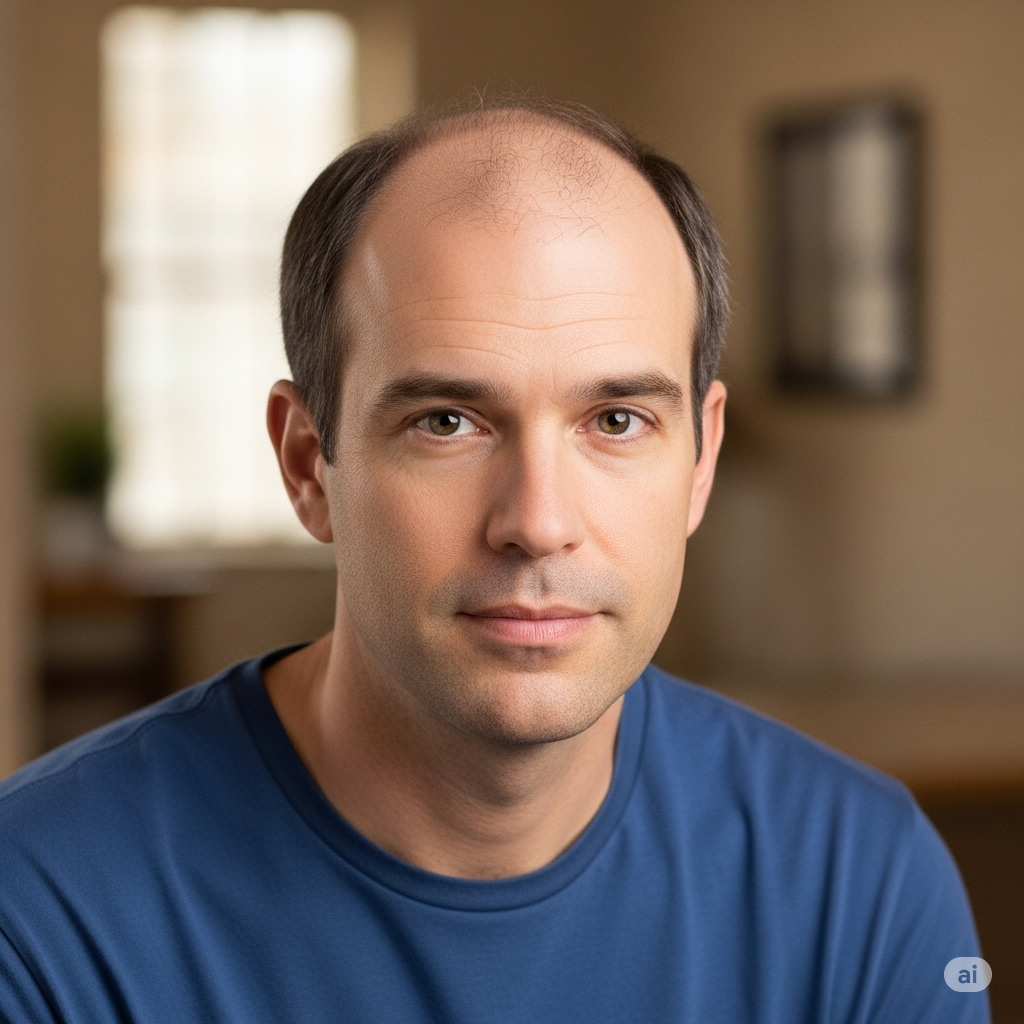Hair loss is one of the most common concerns among men, often leading to frustration and lowered self-confidence. While there are many causes of hair thinning, one hormone is widely recognized as the main culprit behind male pattern baldness: Dihydrotestosterone, or DHT. If you’re struggling with hair loss or worried about thinning hair, understanding DHT and its role in this process is crucial for finding effective solutions. In this blog, we’ll dive deep into what DHT is, how it affects hair follicles, why some men are more sensitive than others, and what treatments can help you fight back.
What is DHT and Why Does it Matter?
DHT is a powerful androgen hormone, a derivative of testosterone. It forms when an enzyme called 5-alpha reductase converts testosterone into DHT in certain tissues, including the scalp. While DHT is essential for many male characteristics—like muscle growth and body hair development—it can also have a damaging effect on the hair follicles of genetically susceptible men.
The Science Behind DHT and Hair Loss
Hair follicles are tiny organs beneath the skin that produce hair. Not all follicles respond the same way to hormones. In men predisposed to male pattern baldness, the follicles on the top and front of the scalp have receptors that are highly sensitive to DHT. When DHT binds to these receptors, it triggers a process called miniaturization — the follicle shrinks, producing thinner and shorter hair strands. Over time, this process leads to weaker hairs that eventually stop growing altogether.
This progressive follicle shrinkage is why male pattern baldness typically starts with thinning at the temples and crown and can lead to complete baldness in those areas. Understanding this biological mechanism helps explain why simply reducing DHT levels or blocking its effect can be so effective in treating hair loss.
Why Do Some Men Lose Hair While Others Don’t?
A question many men ask is: “If DHT is present in every male, why don’t all men go bald?” The answer lies mainly in genetics. Sensitivity to DHT is inherited, and some men have hair follicles that are more vulnerable to its effects.
Genetic Factors
Research shows that the sensitivity of hair follicles to DHT is passed down from your parents, and family history is a strong predictor of hair loss risk. If male relatives like your father or grandfather experienced pattern baldness, there’s a higher chance you might too.
Hormonal Levels and Age
While everyone produces DHT, the amount varies from person to person and can fluctuate over time. Higher levels of testosterone and DHT, especially during and after puberty, can increase the likelihood of hair follicle miniaturization. Additionally, sensitivity may increase with age, causing hair thinning to worsen over the years.
Lifestyle and Environmental Influences
Though genetics and hormones are primary factors, lifestyle choices can influence hair health. Poor nutrition, chronic stress, smoking, and certain medical conditions can exacerbate hair loss or speed up its progression. Maintaining a healthy lifestyle can help support hair follicle health even if you are genetically prone to DHT sensitivity.
How to Identify DHT-Related Hair Loss
Recognizing the signs of DHT-driven hair loss early is important to start treatment promptly and achieve the best results.
Common Signs of Male Pattern Baldness
- Gradual thinning around the temples (receding hairline)
- Thinning or balding spot at the crown of the head
- Overall thinning on top of the scalp while the sides and back remain relatively full
- Hair strands becoming finer and shorter before falling out
If you notice these symptoms, it’s likely that DHT is playing a role in your hair loss. However, other conditions can cause hair thinning, so consulting a hair specialist is always recommended for accurate diagnosis.
What Are Your Options to Combat DHT-Related Hair Loss?
The good news is that modern science has provided effective ways to counteract the effects of DHT on hair follicles. Treatments typically focus on either lowering DHT levels in the scalp or blocking its binding to hair follicles.
Medical Treatments to Block or Lower DHT
- Finasteride (Propecia): This FDA-approved oral medication inhibits the 5-alpha reductase enzyme, which reduces the conversion of testosterone to DHT. By lowering scalp DHT levels, finasteride helps stop hair follicle miniaturization and can even promote regrowth in many users.
- Dutasteride: Similar to finasteride but blocks multiple forms of the 5-alpha reductase enzyme, making it more potent. It’s sometimes prescribed off-label for hair loss but requires medical supervision.
Topical Treatments
- Minoxidil (Rogaine): While not directly affecting DHT, minoxidil increases blood flow to hair follicles, supporting hair growth. It is often combined with DHT blockers for enhanced results.
- Topical DHT Blockers: Some shampoos and serums contain natural ingredients like saw palmetto or caffeine that may help reduce DHT effects locally on the scalp.
Natural Supplements and Lifestyle Changes
Certain natural supplements are believed to have DHT-blocking properties, though scientific evidence is more limited compared to pharmaceuticals:
- Saw Palmetto: An herbal extract that may inhibit 5-alpha reductase.
- Pumpkin Seed Oil: Contains zinc and other nutrients supportive of hair health.
- Biotin, Zinc, and Vitamin D: Important for overall hair follicle strength.
In addition to supplements, maintaining a balanced diet, reducing stress, and avoiding harsh hair care products can promote a healthier scalp environment.
Advanced Hair Restoration Procedures
For men with more advanced hair loss, treatments like hair transplant surgery or platelet-rich plasma (PRP) therapy offer promising results. These methods do not target DHT directly but help restore hair density and stimulate growth.
Why Early Intervention is Key
DHT-related hair loss is a gradual process. The sooner you start treatment after noticing signs, the better your chances of preserving your natural hair and even reversing some of the damage.
Ignoring early symptoms often leads to more extensive follicle miniaturization, which becomes harder to reverse. Consulting a hair care specialist as soon as you notice thinning or receding hairlines ensures personalized treatment tailored to your stage of hair loss.
Conclusion: Take Action Against DHT and Regain Your Confidence
Understanding the role of DHT in male hair loss is the first step toward effective management. This hormone, while vital for many bodily functions, can shrink sensitive hair follicles and cause the classic signs of male pattern baldness. Fortunately, advances in medicine and hair care provide multiple strategies to block or reduce DHT’s harmful effects on your hair.
If you’re starting to notice thinning hair or worry about genetic predisposition, don’t wait until the problem worsens. Early intervention with DHT-blocking treatments, lifestyle adjustments, and professional guidance can make all the difference.
Ready to fight back against hair loss and restore your hair’s fullness? At ZMD Hair, we offer expert consultations and personalized treatment plans designed to address DHT-related hair loss effectively. Our experienced team stays up-to-date with the latest advancements to help you regain your confidence and youthful appearance.
Contact ZMD Hair today to schedule your consultation. Take control of your hair health now — because a fuller head of hair can change how you feel every day.




